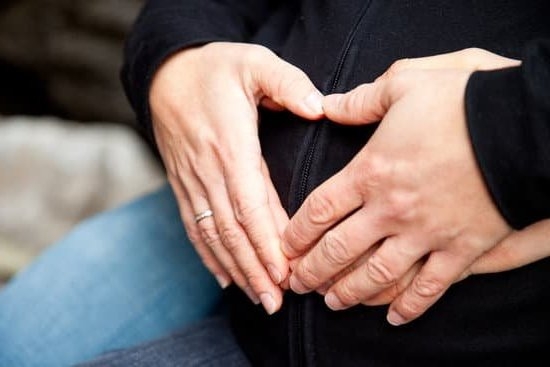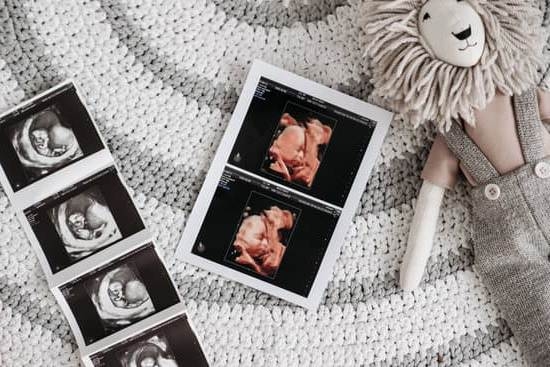Are you wondering how to relieve pregnancy cramps first trimester? Pregnancy cramps in the first trimester can be a cause of concern for many expectant mothers.
Understanding the causes and learning effective ways to manage and alleviate these cramps is essential for a healthy pregnancy. In this article, we will explore the various factors that contribute to pregnancy cramps in the first trimester, provide tips for managing them at home, and offer valuable resources and support for expectant mothers dealing with this discomfort.
Pregnancy cramps in the first trimester can be attributed to a variety of factors, including hormonal changes, implantation of the embryo, and the expanding uterus. It is crucial to distinguish between normal cramping associated with these changes and potentially concerning cramping that may indicate an underlying issue. By learning how to differentiate between the two types of cramping, expectant mothers can address any potential health concerns promptly.
Managing pregnancy cramps at home is often possible with simple lifestyle changes. Proper hydration and nutrition play a significant role in relieving pregnancy cramps, as does engaging in recommended exercises aimed at easing discomfort. Additionally, relaxation techniques such as prenatal yoga and meditation can help alleviate pregnancy cramps and reduce stress levels.
However, it is important to seek medical advice if persistent or severe pregnancy cramps are experienced. With our comprehensive guide, you will gain valuable insights into effectively managing and relieving pregnancy cramps during the first trimester.
Identifying the Difference Between Normal Cramping and Potentially Concerning Cramping
During the first trimester of pregnancy, experiencing cramps is quite common as the body undergoes various changes to accommodate the growing fetus. However, it’s crucial for expectant mothers to be able to distinguish between normal cramping and potentially concerning cramping. Normal cramping during early pregnancy is often caused by the expansion of the uterus and stretching of ligaments, while potentially concerning cramping may be a sign of an underlying issue that requires medical attention.
Normal cramping in the first trimester is typically mild and intermittent, often described as similar to menstrual cramps. It may also be accompanied by other symptoms such as light spotting or discharge.
On the other hand, potentially concerning cramping may be more severe and persistent, with accompanying symptoms such as heavy bleeding, fever, chills, or pain during urination. It’s important for expectant mothers to pay close attention to these symptoms and seek medical advice if they experience any concerning signs.
In addition to paying attention to the intensity and duration of the cramps, expectant mothers should also consider their overall well-being and any other symptoms they may be experiencing. By being aware of these differences, pregnant women can better understand when it’s necessary to seek medical advice for their pregnancy cramps. Understanding these distinctions can provide peace of mind and help manage any anxiety related to experiencing cramps during the first trimester.
Tips for Managing Pregnancy Cramps at Home
During the first trimester of pregnancy, many women experience cramping as the body undergoes significant changes to accommodate the growing baby. While these cramps can be uncomfortable, there are several ways to manage them at home and find relief.
Stay Active
Engaging in light physical activity such as walking or prenatal yoga can help alleviate pregnancy cramps. These exercises can improve circulation, reduce muscle tension, and provide overall relaxation to the body. It’s important to consult with a healthcare professional before beginning any exercise regimen during pregnancy.
Use Heat and Cold Therapy
Applying a warm compress or taking a warm bath can help relieve muscle tension and reduce the discomfort of pregnancy cramps. Additionally, using an ice pack wrapped in a cloth can also provide relief by numbing the area and reducing inflammation. Always ensure that the temperature is not too extreme and consult with your healthcare provider before using heat or cold therapy.
Proper Rest and Positioning
Getting adequate rest is crucial during pregnancy, especially when experiencing cramps. Finding a comfortable sleeping position with pillows for support can help alleviate discomfort. It’s also important to take breaks throughout the day to elevate your feet and relieve pressure on your back and pelvic area.
By implementing these strategies along with maintaining proper hydration and nutrition, expectant mothers can find relief from pregnancy cramps in the first trimester. However, it’s essential to seek medical advice if the cramping becomes persistent or severe.
Recommended Exercises for Easing Pregnancy Cramps
During the first trimester of pregnancy, it is common for women to experience cramping as the uterus expands and grows to accommodate the developing fetus. This can lead to discomfort and even pain for some expecting mothers. While rest and relaxation are important, incorporating gentle exercises into your routine can help ease pregnancy cramps and promote overall well-being. Here are some recommended exercises for easing pregnancy cramps:
- Prenatal yoga: Yoga can help relieve tension in the muscles, improve flexibility, and promote relaxation. Look for prenatal yoga classes or follow along with online videos specifically designed for expectant mothers.
- Pelvic tilts: This exercise helps strengthen the abdominal muscles and alleviate lower back pain often associated with pregnancy. To perform pelvic tilts, get on your hands and knees, and then tilt your pelvis forward and backward.
- Kegels: Kegel exercises strengthen the pelvic floor muscles, which can help reduce cramping as well as improve bladder control during pregnancy. To do Kegels, simply squeeze the muscles you would use to stop the flow of urine.
It’s important to consult with your healthcare provider before starting any new exercise regimen during pregnancy, especially if you have any underlying health conditions. Additionally, listen to your body and avoid any movements that cause discomfort or strain. With proper guidance and care, incorporating these exercises into your daily routine can effectively help ease pregnancy cramps in the first trimester.
The Importance of Proper Hydration and Nutrition in Relieving Pregnancy Cramps
During the first trimester of pregnancy, it is common for women to experience cramps due to the changes happening in their body. One effective way to relieve these cramps is by focusing on proper hydration and nutrition. It is essential for expectant mothers to understand how these factors can play a significant role in managing pregnancy cramps.
Hydration
Proper hydration is crucial during pregnancy as it helps to prevent dehydration, which can exacerbate cramping. Drinking an adequate amount of water throughout the day can help in alleviating pregnancy cramps. Additionally, opting for hydrating beverages such as coconut water or herbal teas can also be beneficial. It is recommended for pregnant women to consume at least 8-10 glasses of water daily, but this may vary based on individual needs and circumstances.
Nutrition
Eating a well-balanced diet that includes essential nutrients such as calcium, magnesium, and potassium can contribute to relieving pregnancy cramps. Including foods like leafy greens, bananas, yogurt, and whole grains in your diet can help alleviate these cramps. It is advisable for expectant mothers to consult with a healthcare provider or a nutritionist to ensure they are meeting their dietary requirements during pregnancy.
Ensuring proper hydration and nutrition not only aids in relieving pregnancy cramps but also supports overall maternal health and wellbeing during this critical time. By making conscious choices about what you eat and drink, you can contribute positively towards managing discomfort associated with pregnancy cramps in the first trimester.
Utilizing Relaxation Techniques to Alleviate Pregnancy Cramps
Pregnancy can bring about a host of discomforts, including cramping, especially during the first trimester. These cramps are often due to the uterus expanding and the ligaments stretching to accommodate the growing baby. Additionally, hormonal changes and increased blood flow can also contribute to these cramps.
To alleviate pregnancy cramps in the first trimester, relaxation techniques can be incredibly beneficial. One effective technique is practicing deep breathing exercises. Deep belly breathing can help relax the muscles and reduce tension, ultimately easing pregnancy cramps.
Another relaxation technique that can be useful is prenatal yoga. Prenatal yoga not only helps in calming the mind but also involves gentle stretching and poses that can relieve muscle tension and reduce pregnancy cramps. It’s important to ensure that the yoga instructor is certified in prenatal yoga to provide safe and effective guidance.
Moreover, warm baths or showers can also provide soothing relief for pregnancy cramps. The heat can help relax muscles and alleviate discomfort. However, it’s crucial to ensure that the water temperature is not too hot, as this could be harmful to the developing fetus.
| Relaxation Technique | Benefit |
|---|---|
| Deep Breathing Exercises | Relaxes muscles and reduces tension |
| Prenatal Yoga | Calms mind, gentle stretches relieve muscle tension |
| Warm Baths/Showers | Relax muscles and alleviate discomfort |
Seeking Medical Advice for Persistent or Severe Pregnancy Cramps
During the first trimester of pregnancy, it is not uncommon for women to experience some level of cramping. However, if the cramps are severe, persistent, or accompanied by other symptoms such as vaginal bleeding or dizziness, it is crucial to seek medical advice promptly.
These could be signs of a potential complication that needs immediate attention from a healthcare provider. It’s important to remember that every pregnancy is different, and what may be normal for one woman may not be normal for another.
If you are experiencing severe or persistent cramping during your first trimester, do not hesitate to contact your healthcare provider. They will be able to assess your symptoms and provide appropriate guidance. It’s always better to err on the side of caution when it comes to the health and well-being of both you and your baby.
In addition to reaching out to your healthcare provider, consider utilizing support resources such as online forums, pregnancy helplines, or local support groups. Connecting with other expectant mothers who have experienced similar symptoms can provide emotional support and valuable insights. Remember, you are not alone in this journey, and seeking help when needed is a sign of strength.
| Signs | Actions |
|---|---|
| Severe or persistent cramping | Contact healthcare provider immediately |
| Vaginal bleeding/dizziness | Seek immediate medical attention |
Additional Resources and Support for Expectant Mothers Dealing With Pregnancy Cramps
In conclusion, pregnancy cramps in the first trimester can be a common occurrence for many expectant mothers. Understanding the causes of these cramps, such as the stretching of the uterus and hormonal changes, is crucial in managing and alleviating discomfort. It’s important to be able to distinguish between normal cramping and potentially concerning cramping, and seeking medical advice for persistent or severe cramps is always recommended.
Managing pregnancy cramps at home can be achieved through various tips and techniques, including exercises specifically targeted to relieve cramps, staying properly hydrated, maintaining a balanced diet, and utilizing relaxation techniques such as prenatal yoga or meditation. These methods can help minimize discomfort and contribute to overall well-being during the first trimester.
For expectant mothers seeking additional support and resources in dealing with pregnancy cramps, there are various avenues available including online forums, support groups, and consulting with healthcare professionals specialized in prenatal care. It’s important for expectant mothers to know that they are not alone in experiencing pregnancy cramps, and with proper knowledge and support, relief is attainable.
The keyword “how to relieve pregnancy cramps first trimester” offers a wealth of information that can provide guidance and comfort to those navigating through this aspect of pregnancy.
Frequently Asked Questions
How Can I Ease the Pain of Cramps During Pregnancy?
You can ease the pain of cramps during pregnancy by adopting a few strategies. For example, regular stretching and gentle exercise like prenatal yoga can help relieve tension in the muscles. Additionally, applying a warm compress to the affected area or taking warm baths can also provide relief.
How Long Does Early Pregnancy Cramps Last?
Early pregnancy cramps typically last for a few minutes to a few hours. They are usually mild and are caused by the uterus expanding and the ligaments stretching to accommodate the growing fetus. However, if the cramps are severe, persistent, or accompanied by heavy bleeding, it’s important to seek medical attention promptly.
How Do You Stop Cramping in Early Pregnancy?
To stop cramping in early pregnancy, it’s crucial to stay hydrated and drink plenty of water to prevent dehydration, which can exacerbate muscle cramps. Also, getting enough rest and avoiding strenuous activities can help alleviate cramping. If you’re experiencing severe or persistent cramping, it’s best to consult with your healthcare provider for personalized advice and guidance.

Welcome to my fertility blog. This is a space where I will be sharing my experiences as I navigate through the world of fertility treatments, as well as provide information and resources about fertility and pregnancy.





